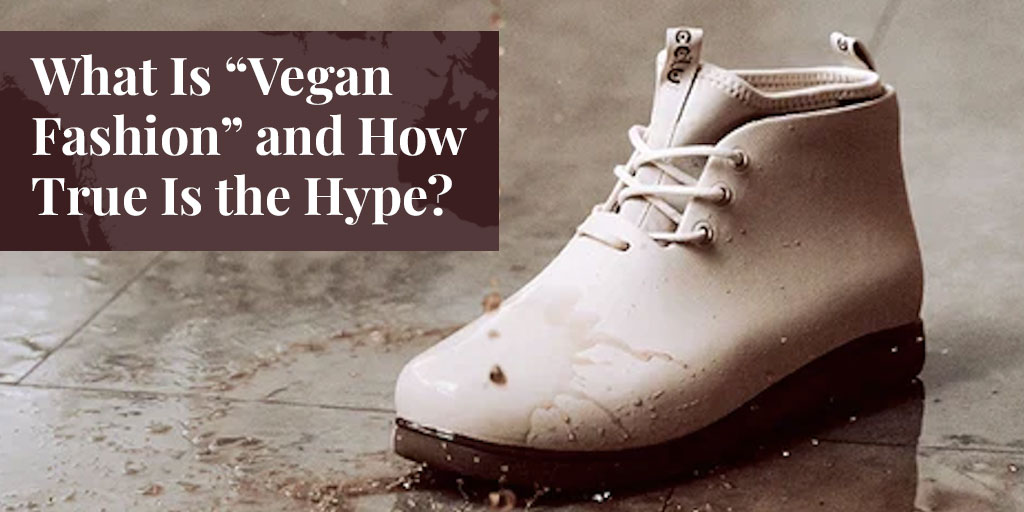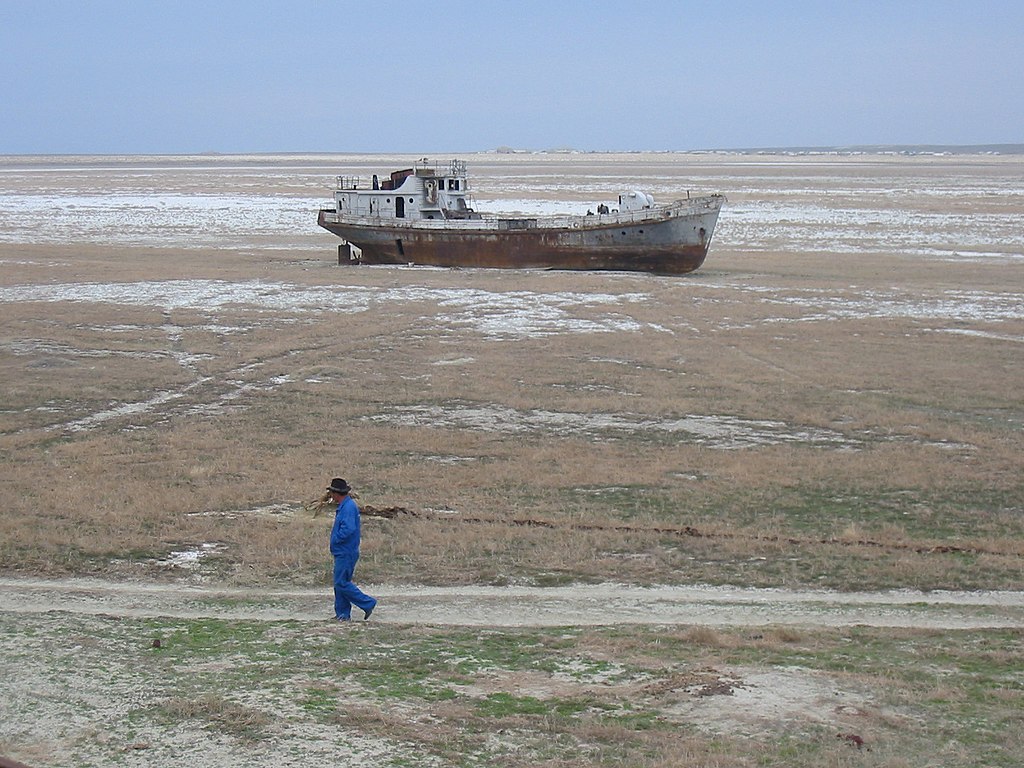
Animal activists want to drive all animal users out of business, so it pays for the fur trade to keep abreast of their latest tactics. One now being pushed hard is “vegan fashion”, but what exactly is it? And how true is the hype? Does it really save animal lives, as proponents claim? And is it really more sustainable than alternatives?
First up, what qualifies as vegan fashion?
There is no strict definition, but the general idea is that no animals can be killed or harmed in any stage of its production. So it’s much like a vegan diet, except that you keep it in your closet.
But there is one important difference. Vegans only eat plants, but if you think they only wear plants, think again. Vegan fashion also contains lots of synthetics made from oil.
The most popular plant fibre with vegan fashionistas (and everyone else, for that matter) is cotton, but there are a lot of other choices. Some are familiar, like linen, hemp, cork and rubber, while others are obscure, like ramie, banana leaves, mushrooms and even coffee grounds!
Then there are semi-synthetics derived from plants, like bamboo rayon, viscose from wood pulp, and modal (made from the pulp of beech trees).
And then there are all the petrochemical synthetics vegans can wear with a (supposedly) clear conscience, like polyester, spandex, nylon, PVC and acrylic. Vegans say they prefer if their synthetics are recycled, not virgin (new), but since most recycled synthetics contain some virgin product for added strength, it’s hard to know if they’re getting what they want.
As for materials that are off-limits, some are obvious, like leather, fur, wool and silk. But others require vigilance if they are to be avoided.
For example, the glue used in shoes and handbags normally contains collagen derived from animals. So vegans must seek out synthetic alternatives, even if there are health risks associated with making and using them.
They must also avoid screenprinting inks containing gelatin from cows and pigs. A popular synthetic alternative is plastisol, but again, vegans must look past the health risks of the phthalates usually found in plastisols.
And a minefield for vegans is buying cosmetics and personal hygiene products. Anything with honey, lanolin or keratin is out, as are soaps, shampoos, shaving cream and lotions containing stearic acid from animal fat. If your skin moisturiser contains glycerol, beware that the most common source is tallow, a rendered form of beef or mutton fat.
So Does Vegan Fashion Really Save Animals?
The main claim made for vegan fashion is that no animals are killed or harmed in its production. At first glance this sounds logical, but the claim does not stand up to scrutiny. It would be accurate to say that no animals are bred and killed to produce vegan fashion, but plenty of animals still die.
But before we start pointing fingers at who kills most animals, we need to recognise that there are different ways of counting animal lives, depending on our biasses.
In theory, we should give equal weight to all lifeforms, such that swatting a fly is equal to slaughtering a cow. In practice, though, we never do this. We prioritise, valuing some species over others.
Most of us are class-biassed (mammals trump reptiles, for example, and insects always come last). We prefer benign herbivores to carnivores that might eat us. Beautiful animals come before ugly ones. Or if you’re a conservationist, an endangered native species always beats a plentiful invasive one.’
And all these biasses give rise to paradoxes that can be hard to reconcile, like self-proclaimed “animal lovers” who feed their pet dogs the meat of other animals, bathe them to kill ticks and fleas, deworm them, and give them vaccines tested on other dogs in labs.
Vegans, of course, have their biasses too, so when they say vegan fashion saves animal lives, which animals do they actually mean? All animals? No. Above all, they mean barnyard animals that are purposely bred to provide food and clothing.
If their calculations were to include all animals, would switching to vegan fashion really save lives? It’s highly unlikely, and in fact the death toll would probably rise.
Killer Cotton

Now let’s take a closer look at what are probably the two most common materials in vegan fashion, cotton and polyester, and ask how animal- and environment-friendly they really are.
Everybody loves wearing cotton, but we also know that growing it – especially by traditional methods – is punishing on the environment.
The trouble starts the moment natural habitat is destroyed and replaced by a monocultural plantation. Then the crop is notoriously thirsty, often requiring far more water than can be supplied by rain alone. And then there’s the heavy use of pesticides. All of these factors exact a toll on animal life, as well as damaging the environment in other ways.
Much of the killing is intentional, as farmers wage war on the myriad insects that cotton attracts. Bollworms, boll weevils, mirids, aphids, stink bugs, thrips, spider mites – the list is long.
And once the insecticides have fulfilled their purpose, they don’t stop killing, or even stay within the confines of the plantation. They drift on the wind, and wash into waterways. Birds, lizards and amphibians die when they eat insects or seeds that have been sprayed, or mistake insecticide granules for food. Fish die when insecticides enter rivers. Pollinators like bees die too, often resulting in lower crop yields.
Genetic modification of cotton is helping reduce the need for insecticides, but there’s still a long way to go. Meanwhile, so-called organic cotton, which uses far less in the way of synthetic fertilisers and pesticides, still only accounts for 1-2% of global cotton production.
Other unintentional deaths occur when water supplies are mismanaged, harming or even destroying surrounding habitat. To appreciate just how badly things can go wrong, look at Central Asia’s Aral Sea – or what’s left of it. Once the world’s fourth-largest lake, tributaries were diverted to irrigate crops, mainly cotton, and most of the sea just vanished. Billions of animals surely died, and populations may never recover, including 20 local species of fish now thought to be extinct.
In short, if we all ditched leather, wool and fur tomorrow, and increased cotton production to fill the shortfall in clothing materials, the total number of animal lives lost would certainly rise.
Plastics Are No Better

So how about the other staple material of vegan fashion, polyester? Its credentials as a clothing material are impressive. It’s cheap, durable, wrinkle-resistant, stretchy, lightweight, quick-drying, it breathes and it wicks moisture. No wonder it accounts for at least half the world’s clothing, and dominates fast fashion and sportswear.
But like cotton, it’s also terrible for the planet. It’s made from non-renewable oil which must be extracted from the ground. The manufacturing process leaves a big carbon footprint – up to 40% of the fashion industry’s total CO2 emissions. When washed, polyester garments release microfibres that pollute the oceans and are now turning up in the food chain, even in drinking water. Polyester is also part of the bigger problem of plastic pollution in general. A widely cited estimate is that plastic pollution kills 100,000 marine mammals and turtles, and a million seabirds, every year. And of course, these plastics don’t biodegrade.
In their defense, vegan fashionistas say that a lot of the polyester they wear is recycled, which means it’s actually good for the environment, “sustainable” even. But this is essentially an exercise in denial.
Recycling polyester is indeed less harmful to the environment than creating virgin polyester. It consumes a lot less energy and water, and CO2 emissions are far lower. But that doesn’t make it good – just less bad.
Furthermore, recycling polyester cannot possibly be sustainable since it is inherently dependent on a nonrenewable resource. All it does is extend the life of polyester already in circulation. Plus, limitations in current recycling technology mean that recycling polyester actually perpetuates demand for virgin polyester. Each time polyester is recycled, it loses strength, and this problem is rectified by mixing in virgin material. And when polyester is blended with other fibres (typically cotton), recycling is all but impossible. Last but by no means least, just like virgin polyester, recycled polyester still sheds microfibres and does not biodegrade.
SEE ALSO: The Great Fur Burial, Part 1: Burial. Truth About Fur.
Accusations of Greenwashing
Just to confuse consumers even more, companies producing and using petrochemical-based synthetics now routinely face accusations of greenwashing – making false claims about the environmental friendliness of their products.
It comes as no surprise when animal activists engage in greenwashing, since they have never let the truth get in the way of a good story. So if they tell you wearing recycled soda bottles will reduce global warming, you can believe it or not.
More troubling are apparent efforts by the fast-fashion industry to improve its public image. Having faced a storm of criticism in recent years for various practices, the industry is now desperate for a makeover, which includes casting petrochemical synthetics in a better light.
But now the media, consumer protection groups, and others are asking tough questions.
Matters came to a head last June, when the New York Times ran an in-depth article entitled “How fashion giants recast plastic as good for the planet”. Renaming products is just one way, the article says. For example, fake leather used to be called “pleather”, a clear indicator of its plastic origins, typically polyurethane. But now it’s called “vegan leather”, a change the NYT calls “a marketing masterstroke meant to suggest environmental value.”
In critics’ crosshairs is the controversial Higg Index, launched in 2012 by the Sustainable Apparel Coalition (SAC), a nonprofit group that includes major fashion brands and retailers, and the US Environmental Protection Agency. Intended to rate the environmental impact of various fabrics used in clothing, the Index “is on its way to becoming a de facto global standard,” says the NYT.
But hold on, the article continues. The Index “strongly favors synthetic materials made from fossil fuels over natural ones such as cotton, wool and leather. Now, those ratings are coming under fire from independent experts as well as representatives from natural-fiber industries who say the Higg Index is being used to portray the increasing use of synthetics as environmentally desirable despite questions over synthetics’ environmental toll.”
In particular, critics say the Index doesn’t accurately reflect the full life-cycles of synthetics, including harmful emissions during production, how much ends up in landfills or incinerators, and microfibres polluting the oceans.
Shortly after, the SAC announced that it was pausing the use of consumer-facing Higgs labels globally, following a conclusion by the Norwegian Consumer Authority that the Higg Index was misleading consumers.
Bottom Line
While the debate will continue to rage about how best to clothe 8 billion humans, the simple truth is that all currently available alternatives have their downsides. They all result, directly or indirectly, in the deaths of animals, and leave environmental footprints of varying size.
But since the two major claims being made for vegan fashion are simple, let’s try to answer them in simple terms:
Does vegan fashion save animal lives? If enough people were to wear vegan fashion, and especially if they were to adopt a vegan diet too, fewer barnyard animals would be bred. So in that sense, yes, vegan fashion has the potential to save the lives of domesticated species like cows, pigs and sheep. But if all animal lives are given equal weight (i.e., a snake or boll weevil is equal to a cow), this saving would be more than offset by the loss of animal life caused by converting more land to plant agriculture.
As for petrochemical synthetics like polyester, it is now universally recognised that their usage is harmful to the environment, including wildlife. So even if your polyester blouse is made from recycled soda bottles, it may slow the production of virgin polyester, but in the long term it offers nothing in the way of a solution.
Is vegan fashion more sustainable than alternative choices? There is almost no basis for this claim, as vegan fashion currently exists.
Noble efforts make the headlines regularly as innovative companies strive to develop more sustainable materials and methods of producing them. But we’re not there yet. Which means that vegan fashion will continue to rely on crops like cotton, which are harmful to the environment, and petrochemical plastics like polyester, which are not only harmful but also the antithesis of sustainable.
***
To learn more about donating to Truth About Fur, click here.










